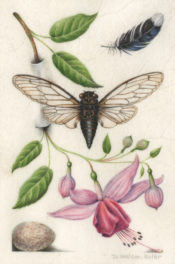
Les Femmes du Maroc: Revisited #1, Lalla Essaydi, 2009, chromogenic print. Image courtesy the artist
It’s been 27 years since art historian Linda Nochlin published her essay “The Imaginary Orient,” a critique of sexist and racist depictions of “brown and black folk” by Western artists such as Jean-Léon Gérôme.
Back then, “I was put off to the depths of my being,” Nochlin said of Gérôme’s paintings at a recent panel discussion here at the Getty in conjunction with the exhibition The Spectacular Art of Jean-Léon Gérôme.
Works such as The Snake Charmer, said Nochlin, manifested an imperialist, colonialist view of the East, with their representations of a timeless world seen through white eyes—yet allegedly absent of Western influence.
And yet, Nochlin now admits that she was also seduced by these paintings, with their dazzling surfaces and cinematic storytelling. Today, Nochlin argues that Gérôme, who has been dismissed for these kinds of portrayals, is worth reconsidering for his other virtues.
Looking at Gérôme’s objectifying depictions of women—a prominent example is the painting For Sale (The Slave Market), in which a naked female slave is inspected by a potential buyer—Nochlin, while still horrified, now gives Gérôme the benefit of the doubt. She wondered aloud whether Gérôme, with these “over-the-top” depictions of the East, was intentionally creating an obviously exaggerated fantasy of possession. “Gérôme didn’t really think this was real, did he?,” she asked.
In any case, Gérôme’s paintings are more complicated than simply “West objectifying East,” emphasized art historian Mary Roberts. She pointed out that Middle Eastern artists, such as Turkish painter Osman Hamdi Bey, used much the same imagery as Gérôme. And several Ottoman sultans collected Orientalist works by Gérôme and others.
Another view came from Lalla Essaydi, a contemporary artist from Morocco. Like Nochlin, she admitted to a love-hate relationship with Gérôme’s Orientalist paintings. While aesthetically beautiful, she said, their depictions of nude women in public are deeply upsetting within Middle Eastern culture—a culture in which the mere appearance of women in public is a complicated matter.
The question isn’t purely academic, either. Essaydi pointed out that Western depictions of the Orient have had a real impact on the Middle East. For example, she told the audience that the veil was introduced to protect women from the Western gaze. She noted that in Morocco, the veil was not popular when she was a child—but has become more and more so since 9/11.
In her own work, Essaydi aims to return dignity and self-determination to the women she depicts. Some of her images draw directly upon Orientalist tropes, such as the odalisque, common to Western imagery.
Westerners imagining the Orient as a distant place frozen in time may be an old story, but these kinds of Orientalist images are still prevalent in our visual culture today. Movies such as Eat Pray Love, Syriana, and Prince of Persia have been criticized for their caricatures of Asia, a continent that sometimes seems to exist for the sole purpose of helping rich white people find themselves.




Hi,
I was wondering where you got the information from about Linda Nochlin’s reconsideration of her view on Orientalism in art?
Kind regards